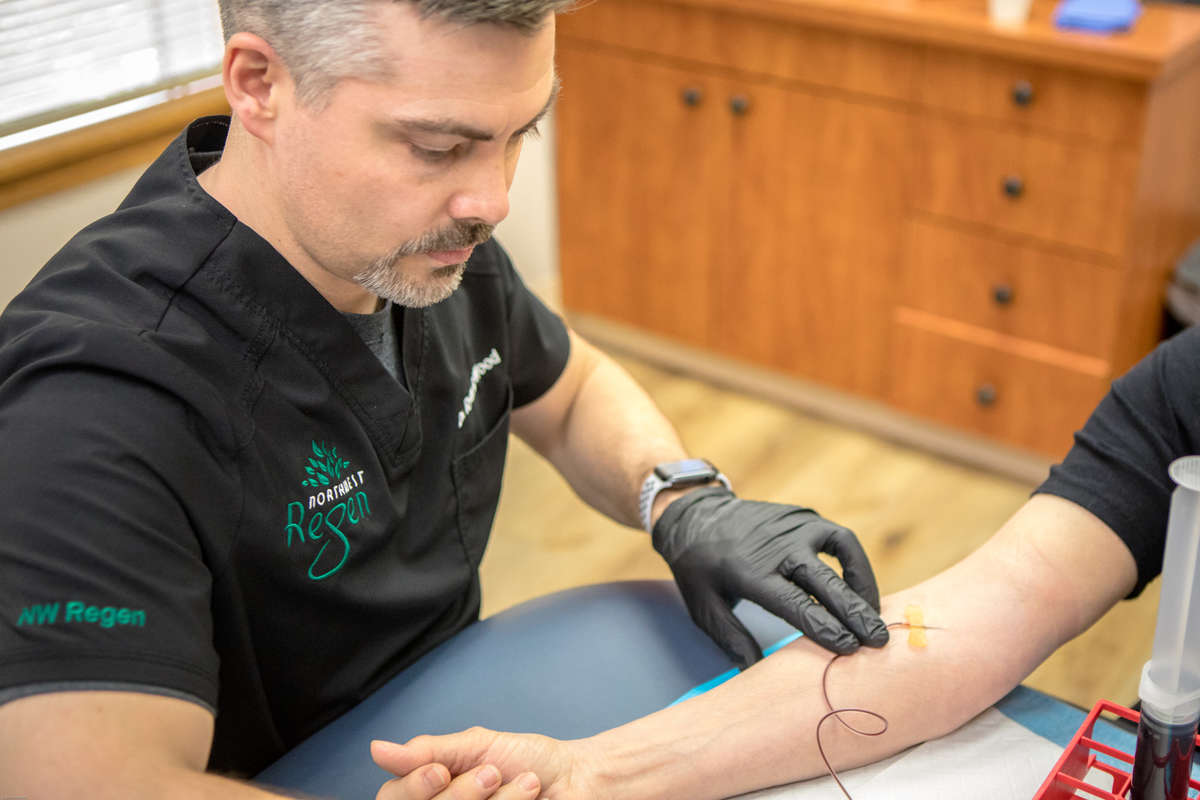Platelet-Rich Plasma (PRP) Injection Therapy
Advanced biocellular therapy that comes from your own blood.
What is Platelet-Rich Plasma (PRP) Therapy?
This advanced biocellular injection therapy (from your own blood) regulates inflammation, stimulates repair, and promotes remodeling of damaged tissues.
We begin with a simple blood draw processed in our in-office lab under highly specialized protocols to produce platelet-rich plasma (PRP) tailored to you.
We then administer a PRP injection directly to the painful area to promote repair and healing, using precise ultrasound to visually guide the injection.
How do PRP injections work?
Platelets form the first line of defense in response to tissue damage. They contain α-granules rich in growth factors and cytokines that promote tissue regeneration, healing and repair.
Injecting a platelet-rich solution directly to the injured tissue promotes the healing process.
What conditions do PRP injections treat?
- Chronic joint pain and instability
- Degenerative osteoarthritis in joints
- Sprains, strains, and other sports injuries
- Meniscal Tears
- Rotator Cuff Tears
- Calcific Tendinosis
- Frozen Shoulder
- Chronic Tendinitis
- Plantar Fasciitis
- Dry-Eye Syndrome
- Men and women’s sexual health
- Hair loss in both men and women
Platelet-Rich Plasma (PRP) Injection Therapy FAQs
What is Platelet-Rich Plasma (PRP)?
Once red and white blood cells are removed from blood using a centrifuge, the yellowish liquid left behind is called plasma. When properly processed in our lab, this plasma contains proteins, fibrinogen, glucose, clotting factors, and concentrated platelets.
How do you make PRP?
Why do we use Platelets for healing?
Does PRP vary?
What is the proper dosage of Platelets?
Does the baseline vary from person to person?
How do I know if I’m getting the baseline?
Why should I choose NW Regen for my PRP treatment?
We use an in-house lab to customize our PRP process, so we know exactly the number of platelets you have and can determine exactly the volume of whole blood needed to tailor any of the desired levels of platelets to achieve optimal healing. Not every condition requires the same procedure, and what works for you may not work for someone else.
Does PRP have any adverse reactions?
The only adverse reaction reported is transient pain and localized swelling after injections, with overall adverse reactions being very low. The other risk factor with any interventional procedure is infection, which we minimize by using sterile aseptic techniques.
Nguyen, C., & Rannou, F. (2017). The safety of intra-articular injections for the treatment of knee osteoarthritis: a critical narrative review. Expert Opinion on Drug Safety, 16(8), 897–902.doi:10.1080/14740338.2017.1344211
